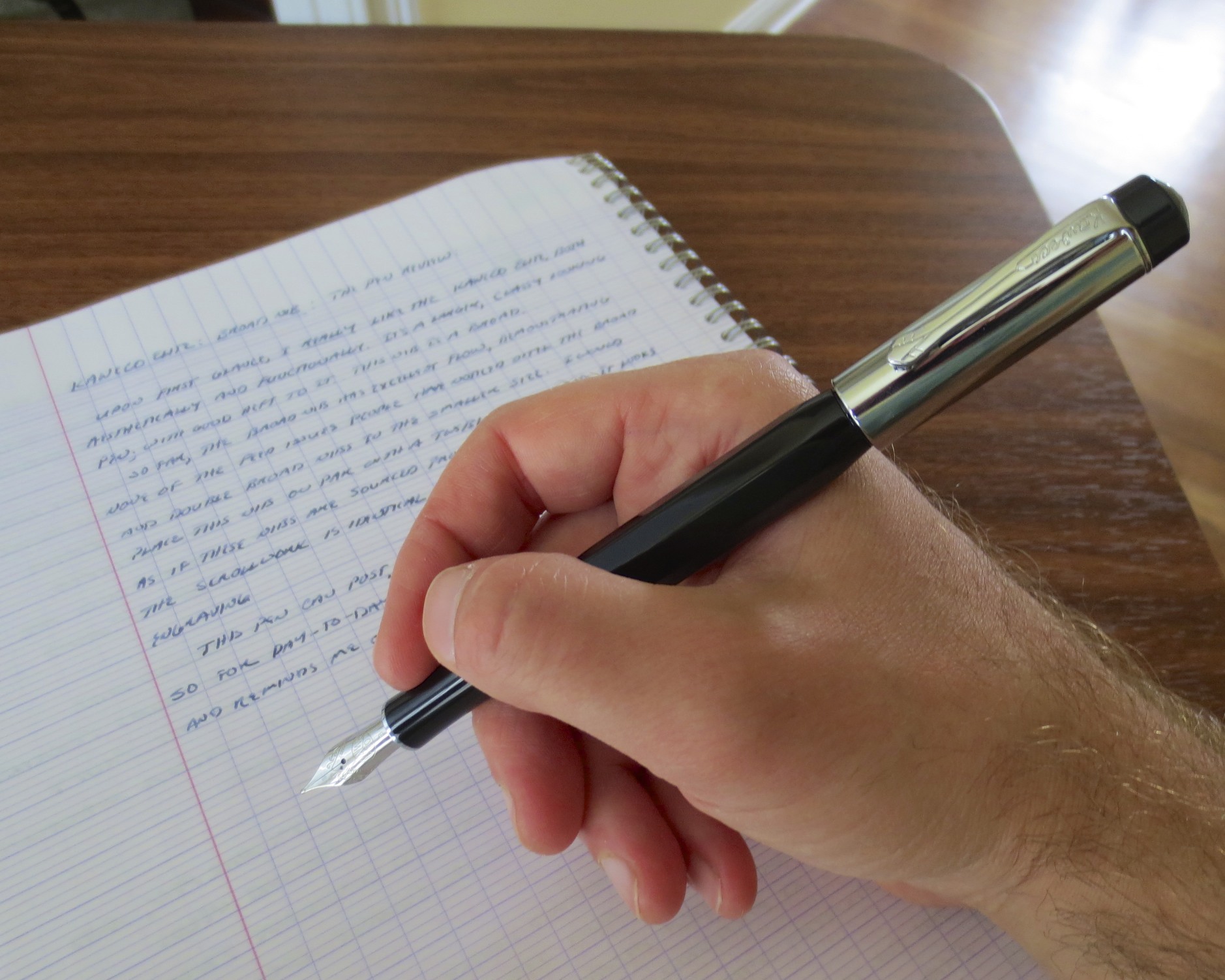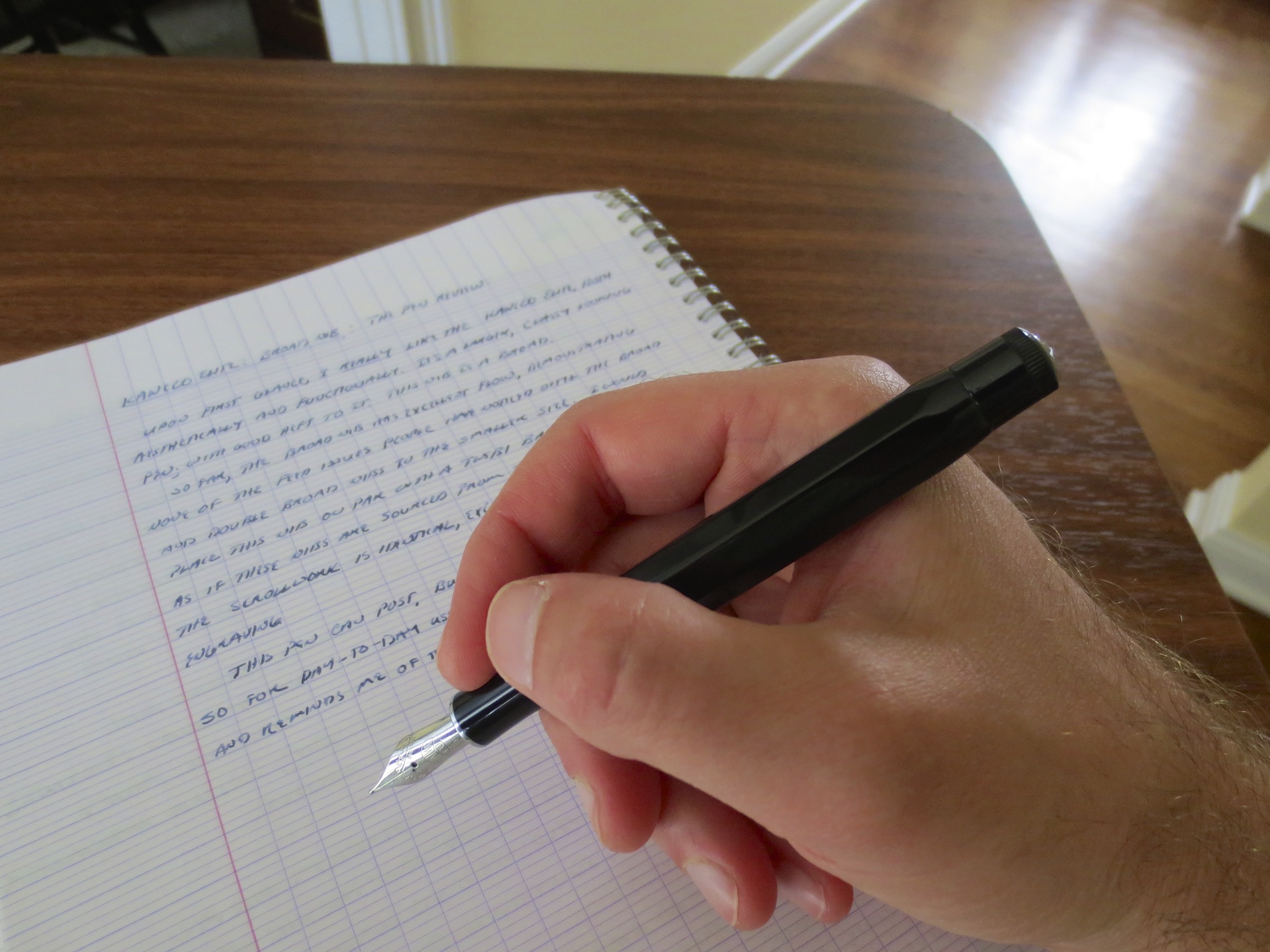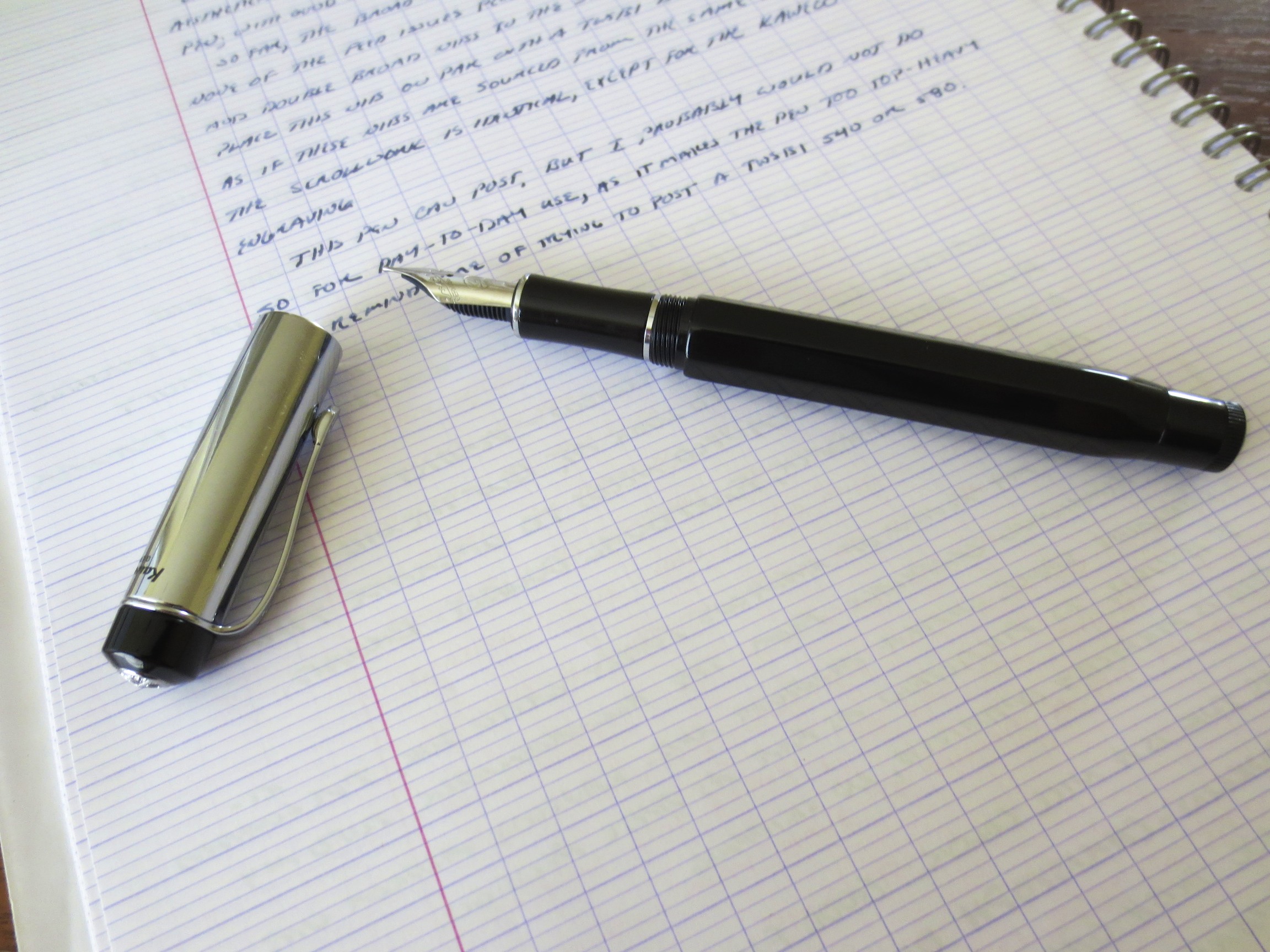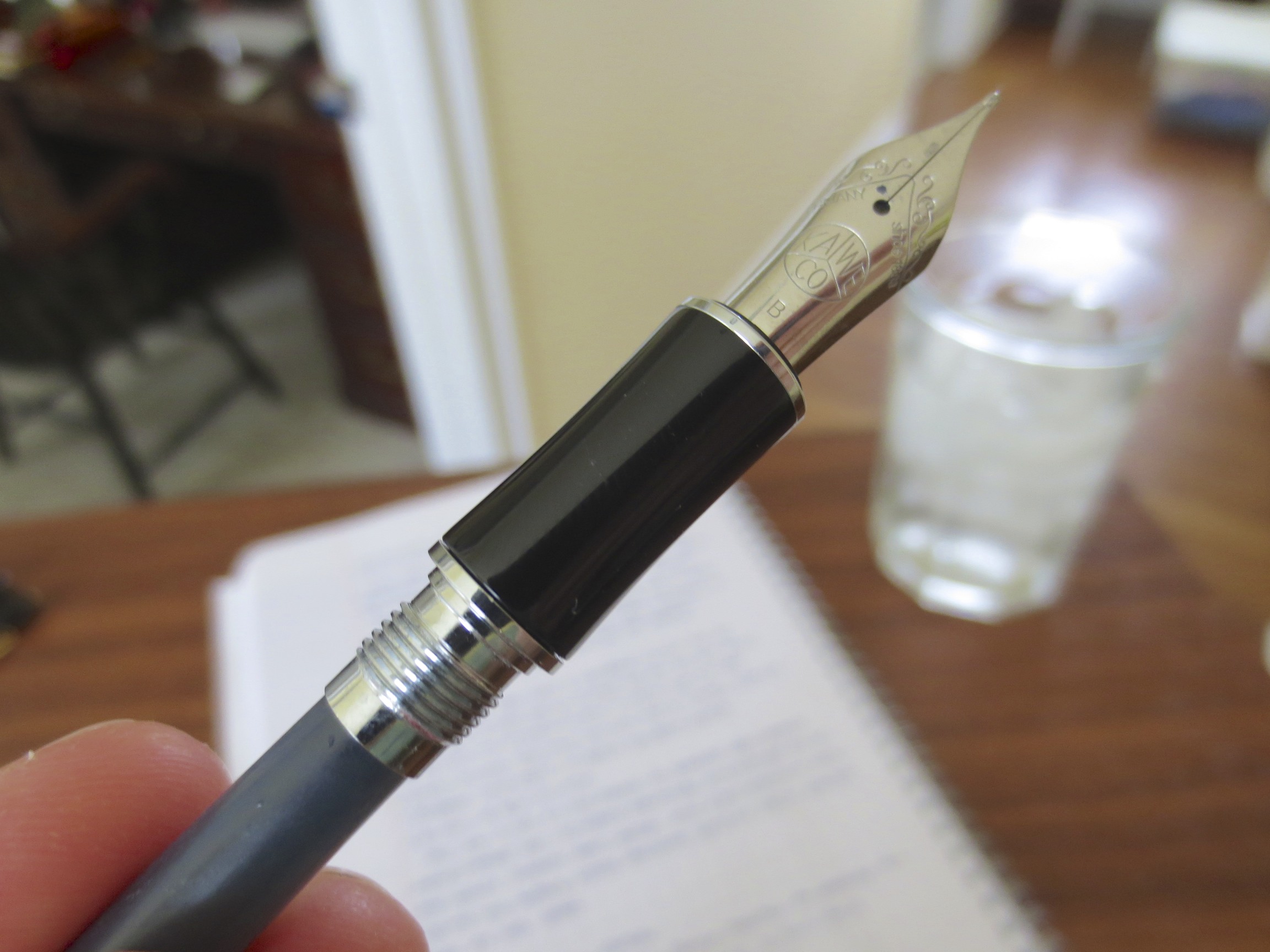Due to the large number of Field Notes Shelterwood reviews that have been out there recently, I was hesitant to add yet another, but I found myself using my first book for a project this weekend and was inspired. I also realize that this is my first Field Notes post since my review of the original Kraft Paper version, which was not my intention.
Field Notes Shelterwood, the Spring 2014 Colors Edition.
Most of the attention given to this edition has to do with the cover: It's cherry wood veneer grafted onto Field Notes standard Kraft Paper stock and left unfinished. What you have is a notebook cover that looks like it is solid wood. When I received the single pack I ordered in the mail (I'm not a subscriber and probably won't be until I run through at least some of the huge backlog of pocket notebooks I have lying around here), all I could do was marvel at the feat of arts and sciences (!!!!!!) that it must have taken to put this thing together. While the notebook looks like it's solid wood, I was struck by how supple the cover still feels. Many people comment about how they feel they can't use this as a typical pocket notebook, reserved primarily for more formal, desktop writing, but at first glance I'm not sure I agree. I'm going to give it a try using it as I would typically use another Field Notes. [Caveat: my impressions may change as I use this notebook. If the cover starts to splinter, fray or wear in a way that would prevent this notebook from living out its intended 3 week to one-month lifespan of daily pocket use, I could see myself shifting it to less "extreme" applications. However, I'm not the typical back-pocket user--I have to wear a suit or jacket most days so I carry mine either in my jacket, shirt or side pocket, which limits the wear they suffer.]
The wood grain on this particular notebook is gorgeous. The printing on the cover (in "ghost white") ink, looks like whitewash you would see on a wooden fence.
The paper in this notebook almost warrants its own review. I'm typically not one to geek out on specs such as paper weight, etc. so I won't do that here. My primary concern is whether or not I can use it for the vast majority of intended purposes. Since this is a lined notebook, the question becomes, can i use it to write longhand with a fountain pen, as opposed to jotting quick notes with a gel pen or pencil? The answer, here, is yes.
The first page of a fresh Shelterwood (outlining Friday's blog post), written in Iroshizuku Tsuki-Yo with a wet Waterman Perspective sporting a fine nib.
Take a look at the page on the left, which is the flip side of the notebook's first page. No bleed-through at all. There is some minimal show-through, but not near enough to bother me, and this pen is a fairly wet writer.
As most fountain pen users have said, I'd love to see this paper used in more Field Notes editions. I have a single pack of the America The Beautiful edition as well, and I'll be cracking those open soon. The one critique I have of this notebook (and it's a small one) is the ruling. As you can see, I write fairly small. I do wish that the ruling on the lined paper was narrower so that I could take better advantage of this paper and not use it up as quickly.
Announcement! This blog is now taking up enough of my time that it warrants its own pocket notebook for projects/ideas, so the Shelterwood has been given the task. I'll update this review or revisit the project as the notebook gets more use and some more wear. I'm also on the cusp of finishing the third notebook of a Doane Paper Utility Journal 3-pack, and after that I've got the third book of a Field Notes Drink Local Ales 3-pack, so there should be some more pocket notebook reviews coming your way. In short, I really like both the Doane and the Drink Locals, but I'm leaning towards sticking with Field Notes just because they have more character, IMHO. I can get my Doane fix with the larger Idea Journals and the writing pads.




